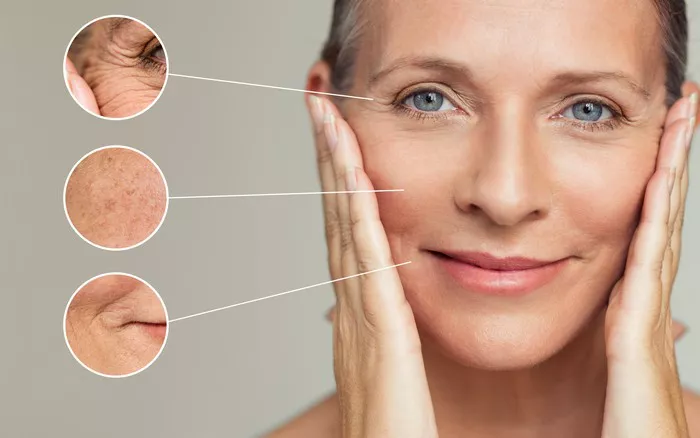Bunny lines, though seemingly whimsical in name, carry a profound significance in the realm of facial aesthetics. These lines, often overlooked, are the subtle creases that appear on either side of the nose when one smiles or scrunches their face. While bunny lines may add charm to one’s expression, they have become a focal point in cosmetic discussions. In this comprehensive article, we delve into the anatomy, causes, and treatment options for bunny lines, offering a thorough understanding of their nature and the evolving landscape of facial aesthetics.
The Anatomy Behind Bunny Lines
To comprehend the intricacies of bunny lines, it is essential to unravel the anatomy of the facial muscles. These lines are a result of the nasalis muscle, a small but influential muscle responsible for the movement of the nose. When engaged, the nasalis muscle contracts, causing the skin on either side of the nose to fold slightly, forming what we affectionately call bunny lines. This dynamic interplay between muscles and skin showcases the complexity of facial expressions and the delicate balance between muscle movement and skin elasticity.
The Enigma of Bunny Lines
Bunny lines are not solely a consequence of aging; they can manifest at any stage of life. Understanding the diverse range of causes and triggers is crucial for both individuals seeking aesthetic enhancement and professionals in the cosmetic field. Genetics play a pivotal role, as some individuals may be predisposed to developing bunny lines due to their family history. Additionally, repeated facial expressions, such as smiling, laughing, or squinting, can contribute to the gradual formation of these lines over time. Environmental factors, including sun exposure and pollution, may also exacerbate their appearance, emphasizing the multifaceted nature of bunny lines.
The Intersection of Bunny Lines and Aging
As the years unfold, the aging process inevitably leaves its mark on the skin. Bunny lines, though minor in comparison to other facial wrinkles, can become more pronounced with age. The skin’s natural loss of collagen and elastin, coupled with a decrease in subcutaneous fat, contributes to the development of fine lines and wrinkles, including bunny lines. Understanding the intersection of bunny lines and the aging process empowers individuals to make informed choices regarding preventative measures and intervention strategies.
Bunny Lines in the Age of Selfies
In an era dominated by social media and the constant sharing of images, the perception of facial aesthetics has taken center stage. Bunny lines, once dismissed as endearing quirks, are now subject to scrutiny in the age of selfies and photo-centric social platforms. The social and psychological impact of bunny lines extends beyond mere aesthetics, influencing individuals’ self-esteem and confidence. As societal norms evolve, so does the pressure to achieve flawless facial features, prompting a surge in interest and inquiries about addressing bunny lines through cosmetic procedures.
Navigating Bunny Lines
For those seeking to address bunny lines without resorting to invasive procedures, a myriad of non-surgical options are available. Botulinum toxin injections, commonly known as Botox, have emerged as a popular choice for minimizing the appearance of bunny lines. By strategically injecting Botox into the nasalis muscle, the muscle’s activity is temporarily reduced, leading to a softening of bunny lines. This non-invasive approach offers a convenient and relatively quick solution for individuals looking to refine their facial aesthetics without undergoing surgery.
Surgical Interventions for Bunny Lines
While non-invasive treatments provide temporary relief, some individuals opt for surgical interventions to address bunny lines more permanently. Rhinoplasty, a surgical procedure aimed at reshaping the nose, can be an effective means of reducing the prominence of bunny lines. This approach involves modifying the underlying structures of the nose to create a more harmonious and balanced facial appearance. While rhinoplasty is a more involved and permanent solution, it requires careful consideration of the potential risks and downtime associated with surgical procedures.
The Evolving Landscape of Bunny Lines Treatment
In the dynamic field of cosmetic procedures, the approach to bunny lines is continually evolving. Increasingly, practitioners are adopting combination approaches that leverage the strengths of both non-invasive and surgical interventions. This trend reflects a personalized and holistic understanding of facial aesthetics, acknowledging that each individual’s needs and preferences are unique. By combining treatments such as Botox injections with minimally invasive procedures, practitioners can tailor solutions that provide comprehensive and natural-looking results, addressing bunny lines in a nuanced manner.
Preventative Measures for Bunny Lines
Proactive measures to prevent bunny lines from becoming more pronounced involve prioritizing overall skin health. Adequate sun protection, through the regular application of sunscreen, shields the skin from the harmful effects of UV rays, preventing premature aging and the deepening of facial wrinkles. Incorporating a skincare regimen rich in antioxidants and moisturizing ingredients nourishes the skin, enhancing its resilience and minimizing the impact of environmental factors. These preventative measures not only contribute to the overall well-being of the skin but also play a pivotal role in maintaining a youthful and vibrant facial appearance.
The Consultation Process
Whether one opts for non-invasive treatments or surgical interventions, the consultation process with a qualified and experienced practitioner is a critical step in bunny lines management. During this consultation, practitioners assess the individual’s facial anatomy, discuss their aesthetic goals, and formulate a personalized treatment plan. This collaborative approach ensures that the chosen interventions align with the individual’s expectations and desires, fostering a sense of confidence and trust in the practitioner’s expertise.
Conclusion
In conclusion, bunny lines, though often overshadowed by more prominent facial features, carry a distinct charm that adds character to one’s expression. Understanding the anatomy, causes, and treatment options for bunny lines provides individuals with the knowledge to make informed decisions about their aesthetic journey. Whether opting for non-invasive procedures, surgical interventions, or a combination approach, the evolving landscape of bunny lines treatment reflects a commitment to personalized and holistic solutions. In the pursuit of facial aesthetics, it is essential to strike a balance between embracing the natural beauty of expression and utilizing available interventions to enhance one’s confidence and well-being.


